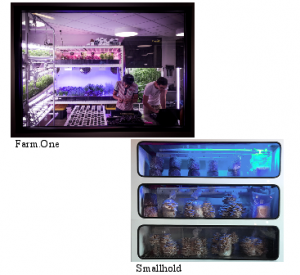Tag: energy-efficiency
June 26, 2024
GreenHomeNYC Passive House Tour: Sendero Verde
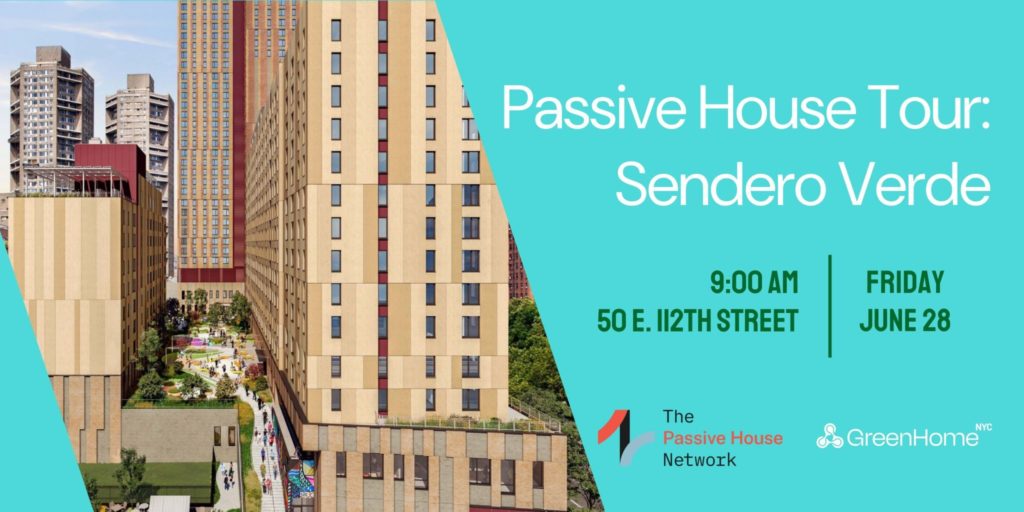
Come join GreenHomeNYC in partnership with Passive House Network to take a tour of the largest multifamily residential Passive House in the United States: Sendero Verde in East Harlem, New York.
The event fee is $10 for general admissions and $5 for student admissions. Please note we have a limit of 45 people, so you must secure a ticket in order to attend.
(more…)August 8, 2021
Monthly Forum: Dirty Energy Around the World

With the international emphasis on electrification, we must focus on the amount of electricity that is being generated by renewables rather than carbon based fuels. In all but one state in the US (and in much of the EU), there are not as many renewables as hoped in the energy mix. (Watch the recording of this forum on our Youtube channel!)
(more…)June 27, 2020
Interview: Reducing Greenhouse Gases from Buildings—Filling the Skills Gap
By Jude Jussim Tom Sahagian knows there’s no time left to dawdle in controlling the greenhouse gas (GHG) emissions from New York City’s buildings. The problem: There’s a shortage of people with the right skills to do it. Sahagian is not talking about policy wonks. “The life of the mind is not what’s going to get us to solving the climate crisis. Pontificating doesn’t do it. You need people who can actually physically do what’s required.”
Sahagian, a GreenhomeNYC board member with many years of experience as an energy efficiency consultant, believes that to dramatically decrease building-generated GHGs, the city’s buildings will have to be powered with clean electricity (e.g. wind or solar) rather than fossil fuels.
An Electrifying Challenge
“New York City needs to convert a thousand buildings a year for the next 30 years,” he says, “which will take hard work and coordination and commitment—and contractors and workers with the right skills. And right now, we have a shortage of those people.”
(more…)
Tom Sahagian knows there’s no time left to dawdle in controlling the greenhouse gas (GHG) emissions from New York City’s buildings. The problem: There’s a shortage of people with the right skills to do it. Sahagian is not talking about policy wonks. “The life of the mind is not what’s going to get us to solving the climate crisis. Pontificating doesn’t do it. You need people who can actually physically do what’s required.”
Sahagian, a GreenhomeNYC board member with many years of experience as an energy efficiency consultant, believes that to dramatically decrease building-generated GHGs, the city’s buildings will have to be powered with clean electricity (e.g. wind or solar) rather than fossil fuels.
An Electrifying Challenge
“New York City needs to convert a thousand buildings a year for the next 30 years,” he says, “which will take hard work and coordination and commitment—and contractors and workers with the right skills. And right now, we have a shortage of those people.”
(more…)
October 28, 2019
Green Careers September Recap: Careers Paths to Energy Efficient Buildings
By Elena Weissmann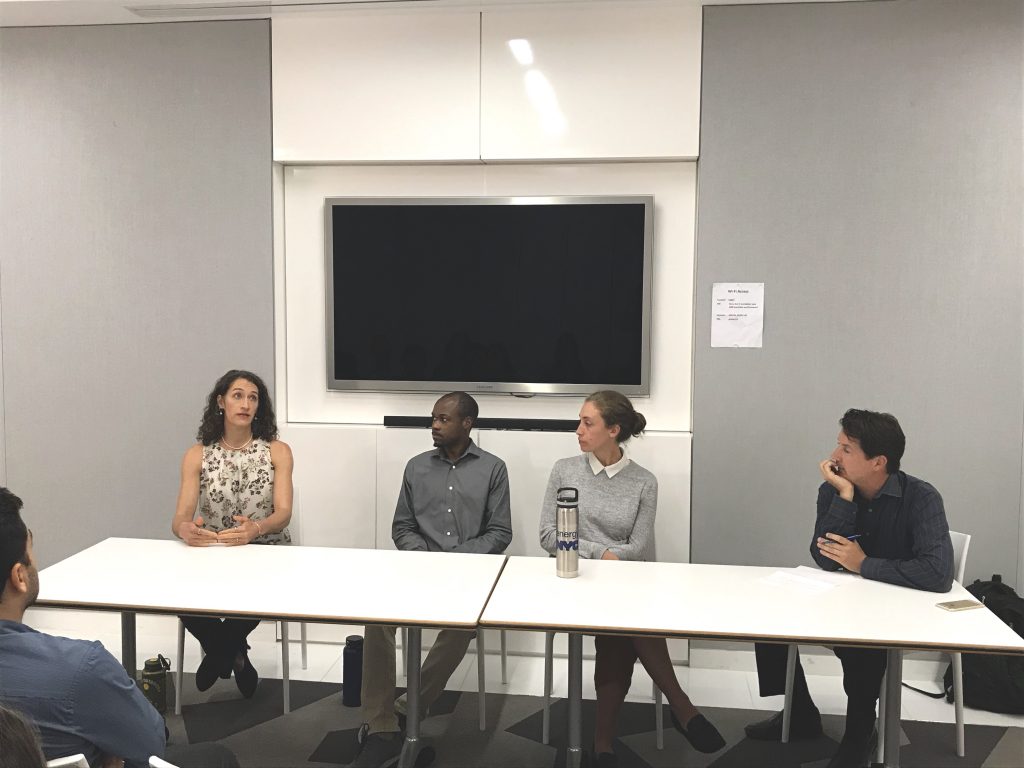 Photo by Alicja Osinska
On September 10, 2019, the GreenHomeNYC community gathered at GROHE to learn from industry experts about jobs in the energy efficient buildings arena here in New York City. We were lucky to be joined by Elizabeth Taveras of the NYC Division of Energy Management (DEM), Daquan Dennis from the CUNY Building Performance Lab, and Mina Agarabi of Agarabi Engineering PLLC.
Elizabeth, Daquan, and Mina gave participants a glimpse into a day in the life at their current workplaces, an understanding of the journeys that took them there, and advice on how participants might navigate their own journeys into this growing field. They also addressed the impact New York City’s new Local Law 97 will have on both careers and culture in the city’s buildings. (more…)
Photo by Alicja Osinska
On September 10, 2019, the GreenHomeNYC community gathered at GROHE to learn from industry experts about jobs in the energy efficient buildings arena here in New York City. We were lucky to be joined by Elizabeth Taveras of the NYC Division of Energy Management (DEM), Daquan Dennis from the CUNY Building Performance Lab, and Mina Agarabi of Agarabi Engineering PLLC.
Elizabeth, Daquan, and Mina gave participants a glimpse into a day in the life at their current workplaces, an understanding of the journeys that took them there, and advice on how participants might navigate their own journeys into this growing field. They also addressed the impact New York City’s new Local Law 97 will have on both careers and culture in the city’s buildings. (more…)
February 5, 2019
Monthly Forum: Affordable Housing Overview, The Path to Better Affordable Housing
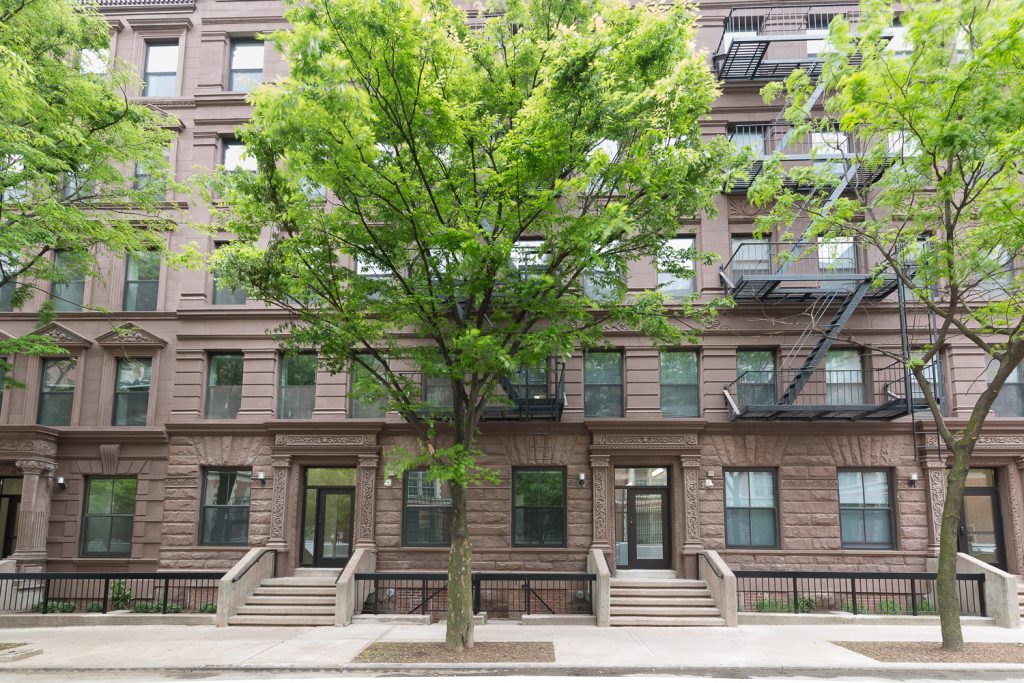
The City, State, and Federal governments have provided subsidies for affordable housing for decades, but this housing is not built by them, it is built by developers. Many years ago, the belief was to build the housing as quickly as possible, which caused much affordable housing to be of modest yet horribly inefficient quality. Today, such housing meets or exceeds most sustainability standards, and tonight’s developers were among the leaders in this change over the years, and remain there to this day. Listen to the process and progress in this field, and decide if you might want to join this field by listening to these accomplished leaders.
Our speakers will include:
Les Bluestone has been involved in real estate development and construction industries for over 35 years working in New YOrk CIty and surrounding areas. Co-founder of Blue Sea Development Company and Blue Sea Construction Co., his firms developed and built New York State’s first affordable Energy Star Homes and New York State’s first three affordable LEED Platinum multifamily buildings. A former Board Chair of Habitat for Humanity NYC, Les is a founding board member of the Center for Active Design, sits on the boards of the New York State Association for Affordable Housing, the NYC Workforce Investment Board, and was appointed by the Governor to the NYSERDA Green Jobs Green New York Advisory Council.
Luke Falk is Vice President of Technology for Related Companies. His group drives technological innovation (including capabilities around energy management, marketing, adtech, IoT, and integrated experiences) at Hudson Yards, the largest private real estate development in the history of the US. Previously he was the Assistant Vice President for Sustainability in Related’s New York Development Group. In that role he developed distributed and renewable energy generation projects, and improved the energy performance and resilience of new and existing developments. He led the sustainability design of over a dozen LEED silver, gold and platinum buildings representing over $5B in capital investment including the tallest passive house in the world for Cornell Tech in New York City.
May 29, 2018
March Forum Recap: Sustainable Policy 201
by Miaoru Guan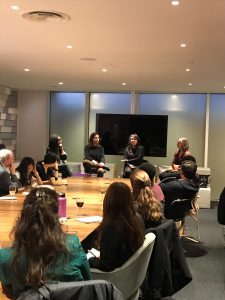 The Sustainable Policy 201 Forum featured four speakers working towards sustainable, affordable housing through diverse but connected roles. Michelle Andry works at New York State Energy Research and Development Authority (NYSERDA), where she focuses on energy efficiency, clean energy, and energy affordability initiatives impacting low-income housing. Francesca Camillo, Project Manager at NYC Department of Housing Preservation and Development (HPD), assists building owners in procuring funding for rehabilitation. Elizabeth Kelly, Manager of Sustainability Programs at The Community Preservation Corporation (CPC), leverages private capital to support sustainable multi-family housing and community revitalization projects. Andrea Mancino is Director of New Construction at Bright Power, and manages team members working on ground-up new construction and commissioning projects.
The panelists discussed how effective policy can encourage wider adoption of sustainable practices in housing by facilitating financing from government sources. For example, to qualify for government funding, new construction and rehabilitation buildings must receive building certification, such as Enterprise Green Communities or LEED certification. Mancino mentioned that achieving certification as an Enterprise Green Community requires buildings to outperform standard building code by 15%. Kelly discussed how these standards help the CPC and private lenders ensure projects have fulfilled a sustainability checklist, reducing the time projects spend in due diligence. Andry added that certified buildings are eligible for NYSERDA grants as well as HPD funding.
(more…)
The Sustainable Policy 201 Forum featured four speakers working towards sustainable, affordable housing through diverse but connected roles. Michelle Andry works at New York State Energy Research and Development Authority (NYSERDA), where she focuses on energy efficiency, clean energy, and energy affordability initiatives impacting low-income housing. Francesca Camillo, Project Manager at NYC Department of Housing Preservation and Development (HPD), assists building owners in procuring funding for rehabilitation. Elizabeth Kelly, Manager of Sustainability Programs at The Community Preservation Corporation (CPC), leverages private capital to support sustainable multi-family housing and community revitalization projects. Andrea Mancino is Director of New Construction at Bright Power, and manages team members working on ground-up new construction and commissioning projects.
The panelists discussed how effective policy can encourage wider adoption of sustainable practices in housing by facilitating financing from government sources. For example, to qualify for government funding, new construction and rehabilitation buildings must receive building certification, such as Enterprise Green Communities or LEED certification. Mancino mentioned that achieving certification as an Enterprise Green Community requires buildings to outperform standard building code by 15%. Kelly discussed how these standards help the CPC and private lenders ensure projects have fulfilled a sustainability checklist, reducing the time projects spend in due diligence. Andry added that certified buildings are eligible for NYSERDA grants as well as HPD funding.
(more…)
March 18, 2018
February Forum Recap: How to be Cool and Efficient
by Yiran Song Air conditioning is increasingly considered to be a required amenity in both residential and commercial settings. But concerns about global warming and greenhouse gas emissions gives us no time to waste in achieving more energy efficient AC systems. In the February GreenHomeNYC Forum “How to be Cool and Efficient”, three industry experts provided a detailed description of the mechanics of AC systems and the industry as a whole.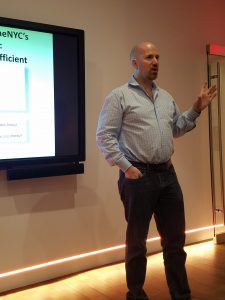 Systems and Relative Energy Efficiency
Brendan Casey, of Fujitsu General America, believes that the Variable Refrigerant Volume (VRV) or so-called Variable Refrigerant Flow (VRF) system is the future of AC systems. Even though VRF can be carried as cooling only, building owners and management companies in places like New York City should consider either heat pump or heat recovery systems which provide both cooling and heating. The heat recovery system carries higher installation cost, but it can provide both heating and cooling at the same time to different zones based on demand with only one control.
(more…)
Systems and Relative Energy Efficiency
Brendan Casey, of Fujitsu General America, believes that the Variable Refrigerant Volume (VRV) or so-called Variable Refrigerant Flow (VRF) system is the future of AC systems. Even though VRF can be carried as cooling only, building owners and management companies in places like New York City should consider either heat pump or heat recovery systems which provide both cooling and heating. The heat recovery system carries higher installation cost, but it can provide both heating and cooling at the same time to different zones based on demand with only one control.
(more…)
March 1, 2018
January Forum Recap: The Green Catwalk
by Jenny Nicolas At the annual GreenHomeNYC Green Catwalk, seven speakers presented the latest information on everything from ventilation to greening the moving industry to O&M to-do lists within the sustainability space. Part 1: Eat, Breathe, Move, & Check Sustainably Changing Our Relationship with Food Ricky Stephens, co-founder of AgTech X, set the stage by presenting some of the biggest flaws within our country’s current food system. He indicated that 80% of the food grown today is not meant for human consumption, with 40% grown to support animals and 40% to be processed into biofuels. Additionally, though the plant kingdom is diverse, 84% of total US cropland is dedicated to just three crops: corn, soybean, and wheat. The long term prospects for the system are also in jeopardy as farming is not attracting new folks to the industry – the average age of a U.S. farmer is 58. What can be done to fix our current system? The goal of AgTech X is to create a new food economy, using urban farming as a vehicle to educate, decentralize, and make farming exciting again. AgTech X fosters a collective community by hosting classes, workshops and tours. Its co-lab workspace supports decentralized urban farming methods like Farm One and Smallhold, indoor farms housed in restaurants that produce farm-to-table microgreens. And a recent “Intro to Aquaponics” class by Oko Farms explained the closed-loop system of raising fish, creating fertilizer for plant growth and filtering the water. While urban farming is not a new concept, innovations in the past five years are making it a more intriguing career option for young professionals! (more…)December 3, 2017
NYC’s 80 x 50 Goal: Is it Realistic? How Do We Get There?
By: Tom SahagianDecember 2, 2017
{Green Careers} Webinar: Sustainability Careers & Job Search Strategies in a Changing World
 GreenHomeNYC is pleased to present a new webinar by Dr. Eban Goodstein, Director, Graduate Programs in Sustainability at Bard College.
Dr. Goodstein will provide participants with a tailored, concrete job search strategy; outline different mission-driven career directions in sustainable business, non-profits and government; evaluate the impact of President Trump on sustainability jobs; discuss grad school and continuing education options (including school now/school later); and take questions from the audience.
Hosted by the GreenHomeNYC {Green Careers} Program and the Bard Center for Environmental Policy
REGISTER HERE
Webinar Date: Thursday, December 7, 2017
Time: 6:30 – 7:30 pm including Q&A
Location: Your computer
Login instructions will be sent with your confirmation.
If you have any questions, please contact our Green Careers team at [email protected]
GreenHomeNYC is pleased to present a new webinar by Dr. Eban Goodstein, Director, Graduate Programs in Sustainability at Bard College.
Dr. Goodstein will provide participants with a tailored, concrete job search strategy; outline different mission-driven career directions in sustainable business, non-profits and government; evaluate the impact of President Trump on sustainability jobs; discuss grad school and continuing education options (including school now/school later); and take questions from the audience.
Hosted by the GreenHomeNYC {Green Careers} Program and the Bard Center for Environmental Policy
REGISTER HERE
Webinar Date: Thursday, December 7, 2017
Time: 6:30 – 7:30 pm including Q&A
Location: Your computer
Login instructions will be sent with your confirmation.
If you have any questions, please contact our Green Careers team at [email protected]

